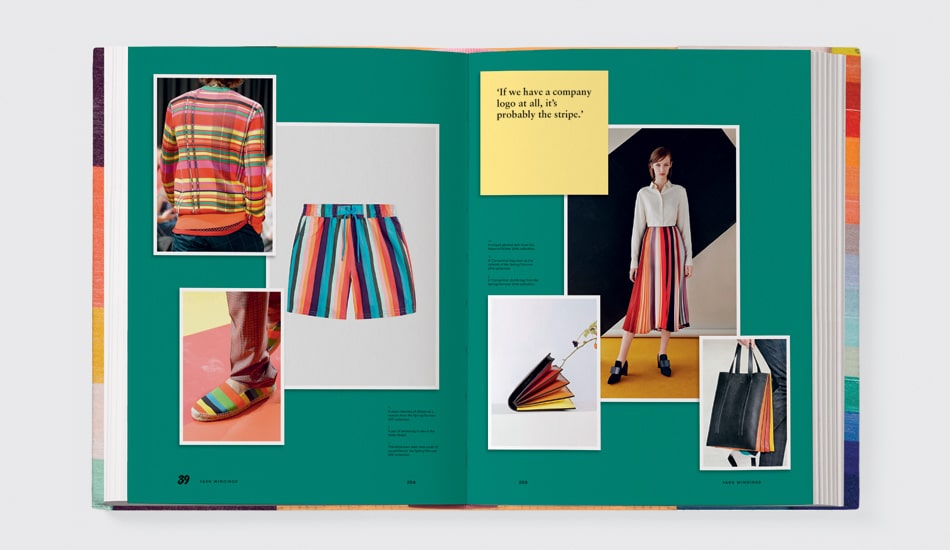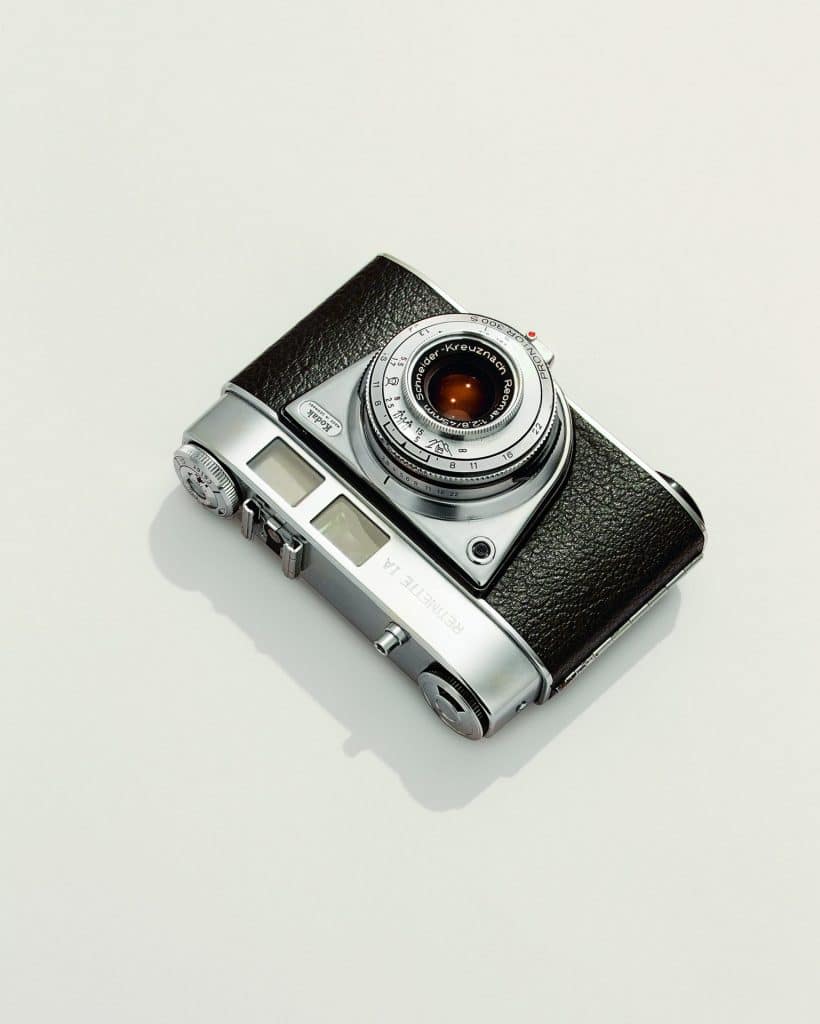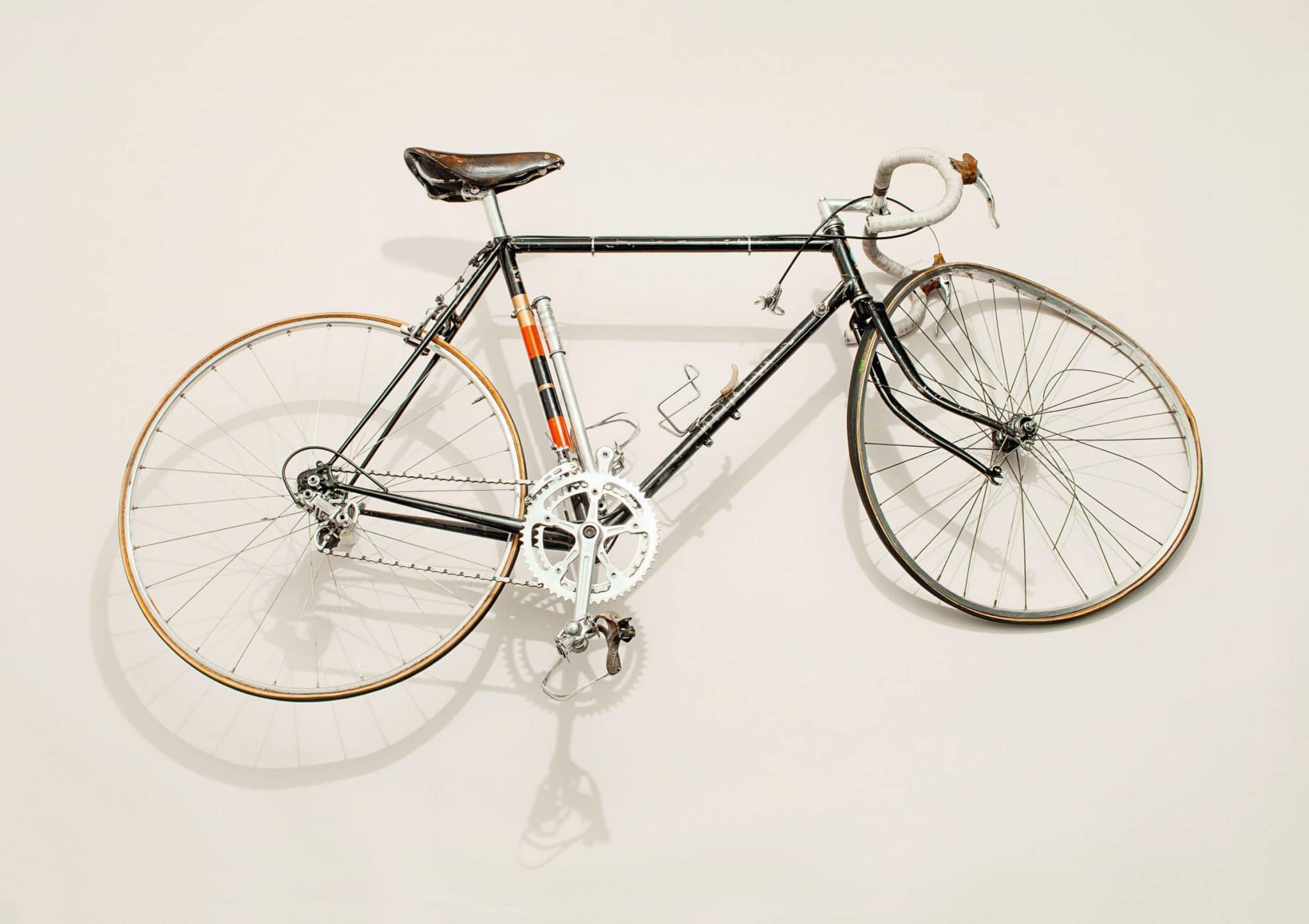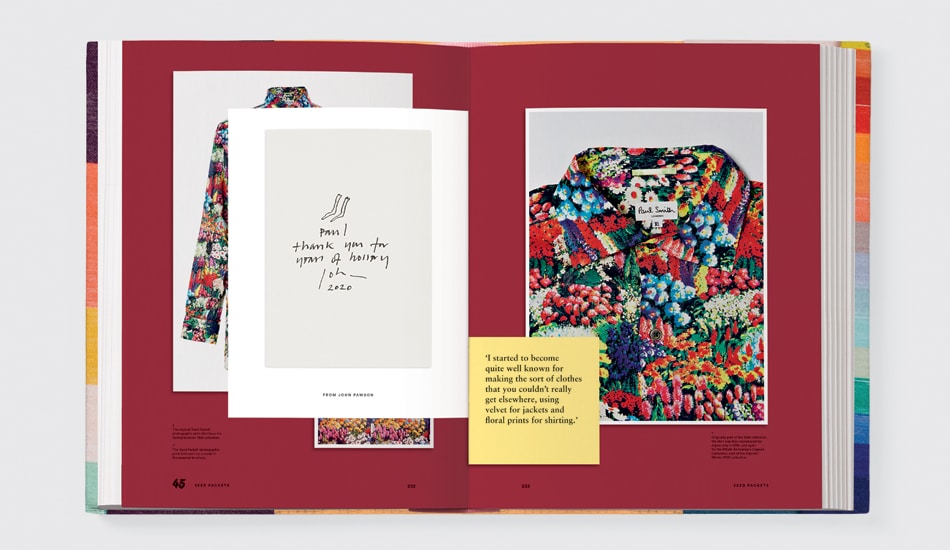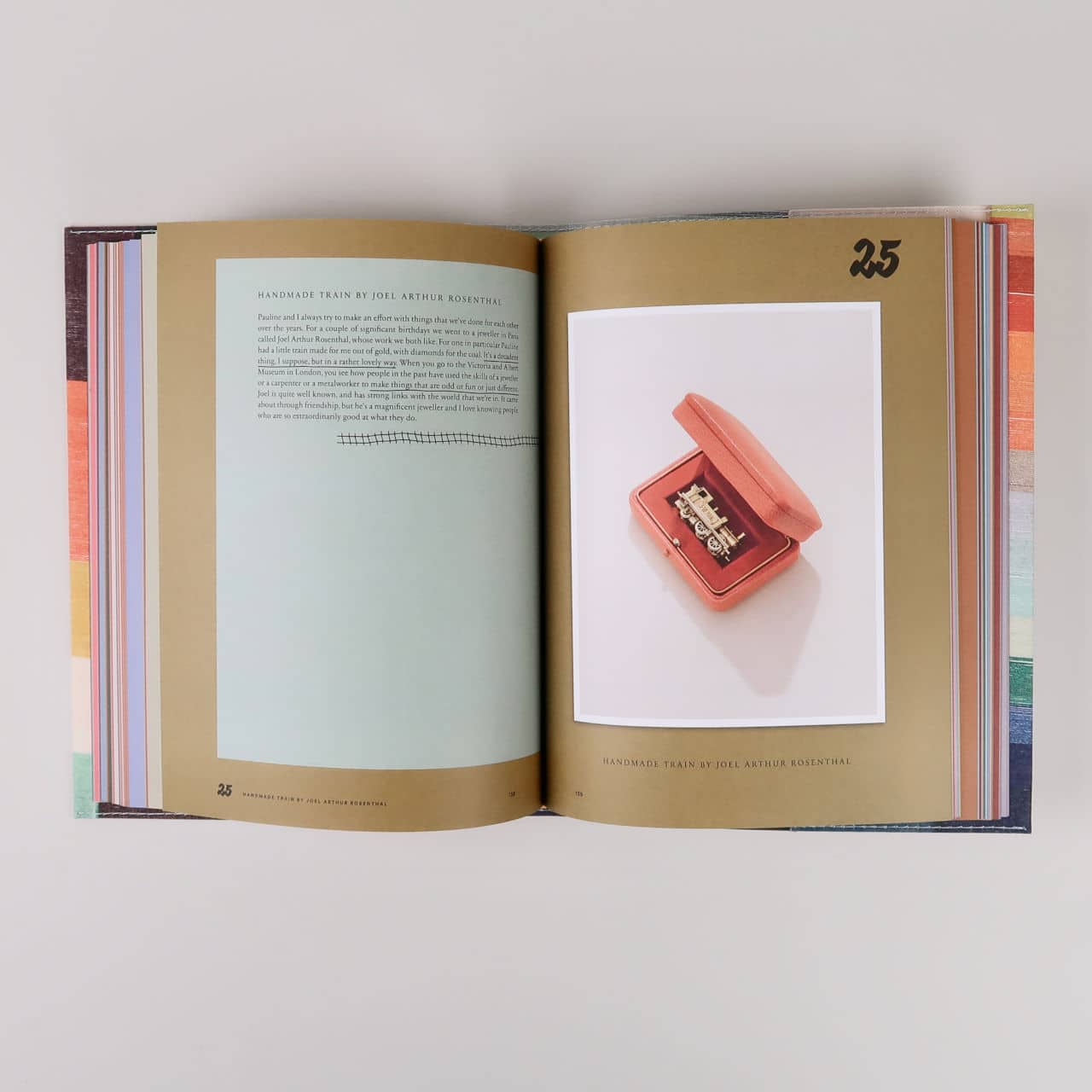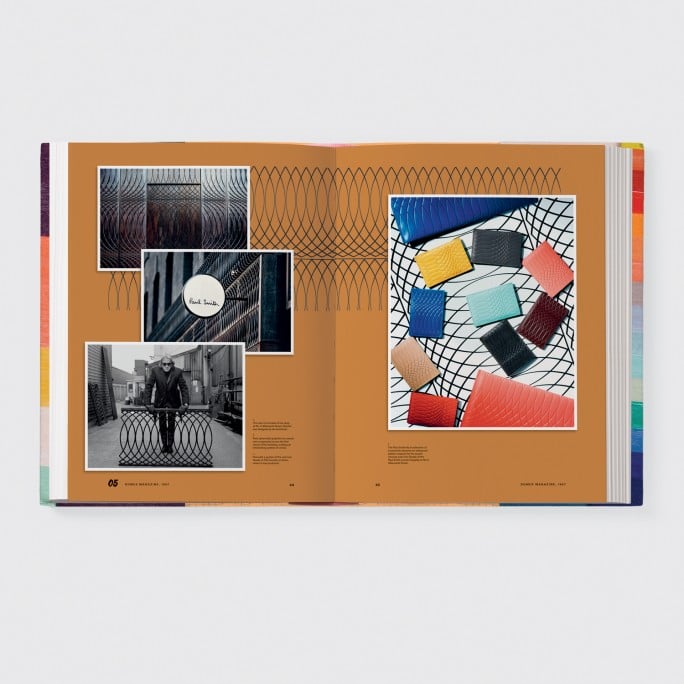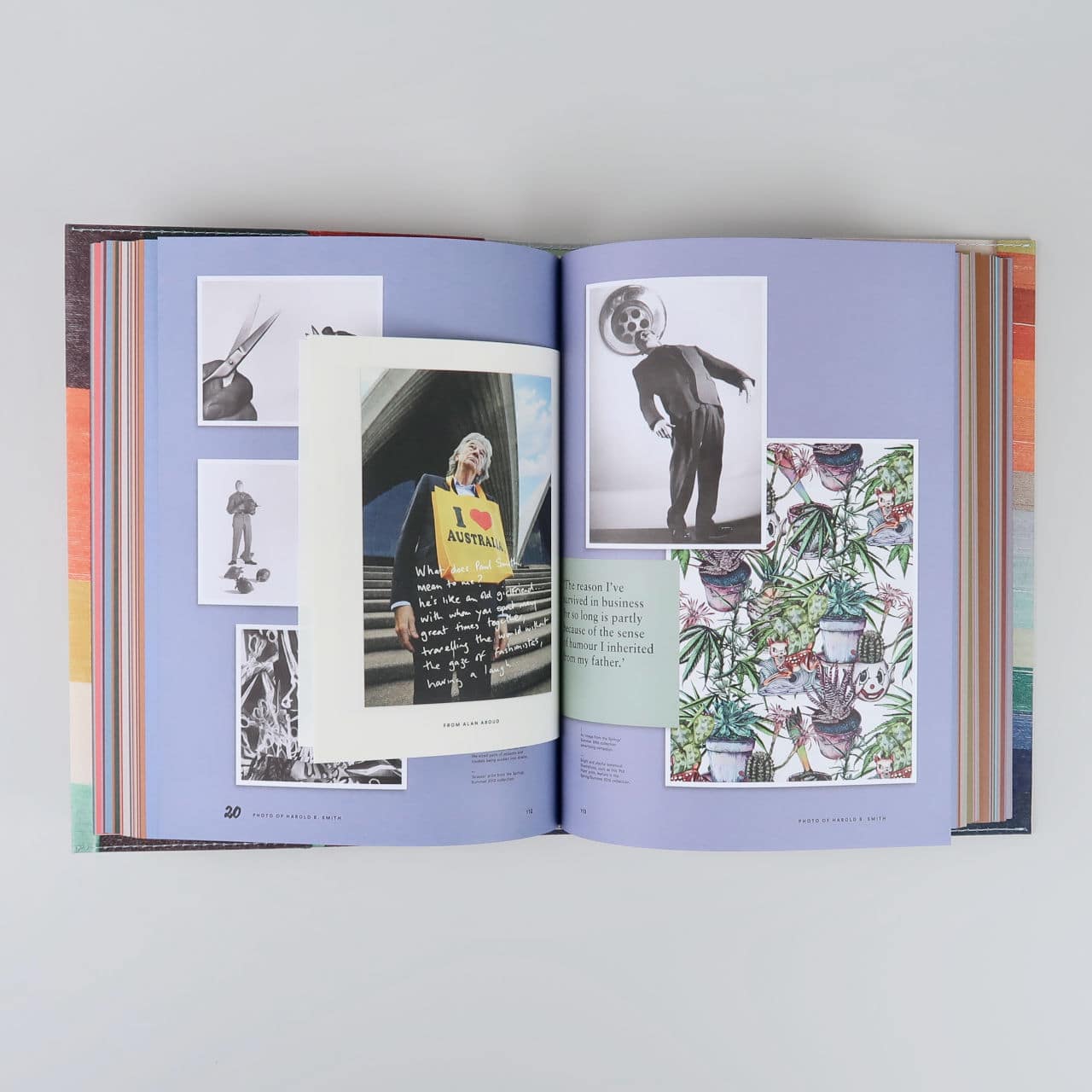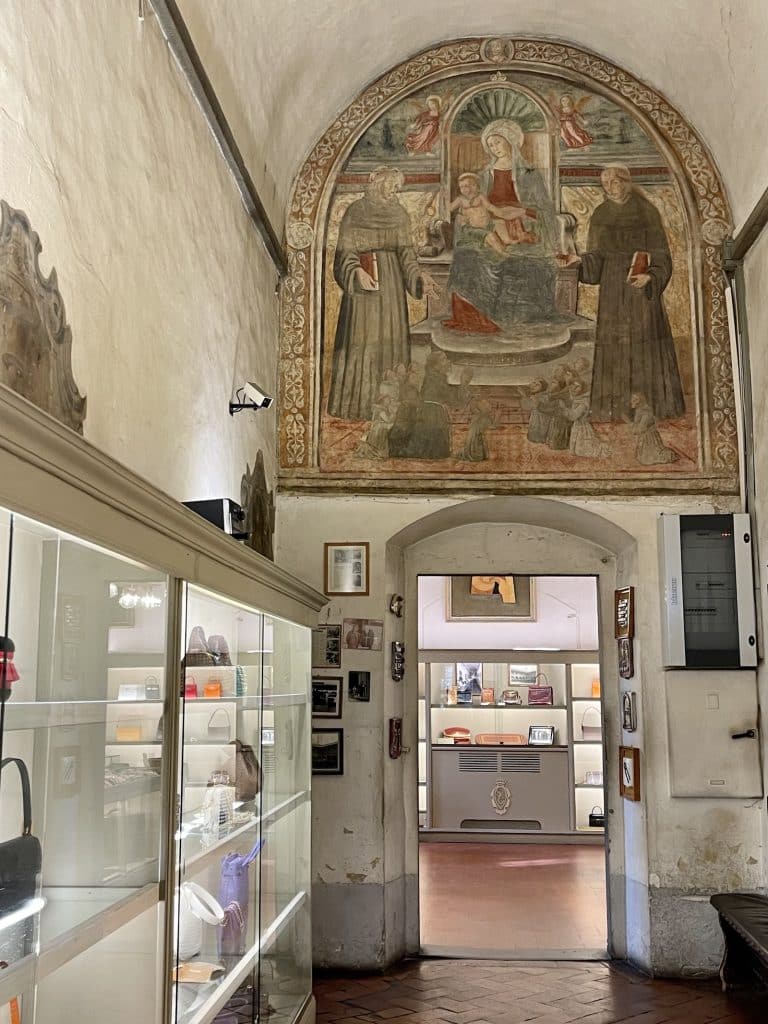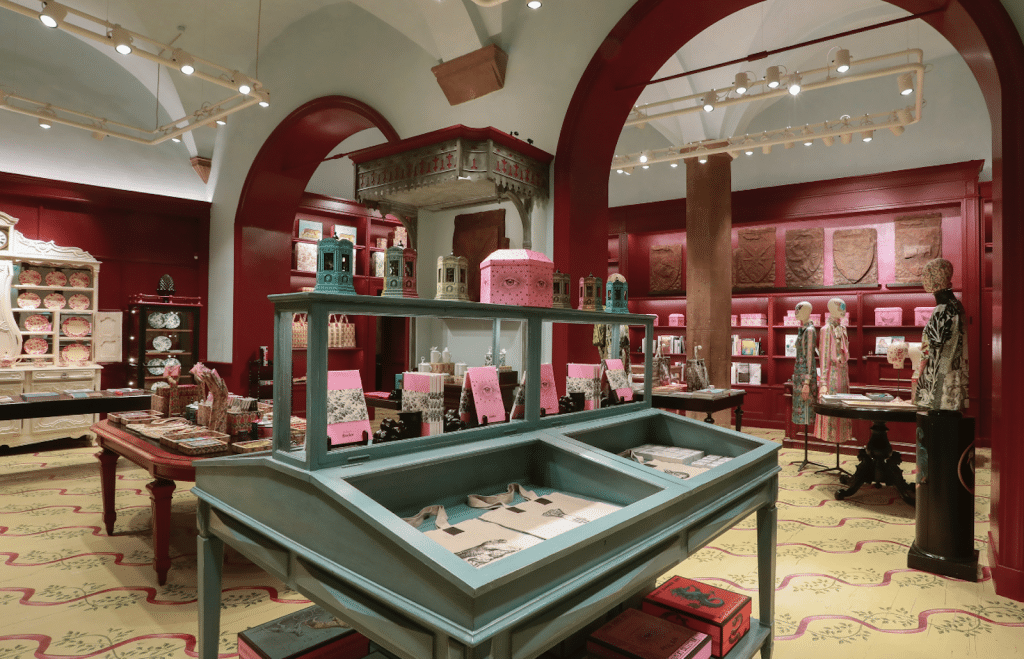Sir Paul Smith is probably Britain’s best known designer. Over 50 years he has forged a globally renowned brand, his name synonymous with the very best in British design. To celebrate this anniversary, Paul Smith by Phaidon, and edited by Tony Chambers, is a wonderful book, fittingly wrapped in tactile stitched, boards covered with colourful Paul Smith fabric.
Following regular early morning interviews – Paul Smith is inevitably an early-bird – where discussions tended to fall on specific objects and influences, Chambers and Smith ultimately chose to tell his story via a selection of 50 diverse objects.
Selecting an eclectic variety that have inspired him through the years, they chart his journey, illustrating his enthusiasm for cultural references, and a love of idiosyncratic combinations of pattern and colour.
There is a staggering range in the objects from which he has developed his creative strengths. Smith has stated that ‘you can find inspiration in everything’, and it is easy to see that he is as likely to draw from an everyday object as art or fine design.
Smith is an inveterate hoarder and collector, his working space crammed floor to ceiling with objects; a photograph taken by friend Martin Parr shows him almost submerged amongst an Aladdin’s cave of colourful books and seemingly random objects.
Personal items, all kept for years and carefully stored, include the first Object in the book – his camera, a Kodak Retinette, given to him by his father. It encouraged him to think about ‘looking and seeing’ whilst his father’s humour and creativity with his family snapshots, and in life in general, influenced his way of thinking and showed that humour can help you get a long way in business relationships.
The last Object in the book – also carefully preserved for posterity, was his mangled racing bike. Smith’s teenage ambition was to be a racing cyclist but the dream ended with a crash that put him in hospital for 3 months, but which also led him to encounters with people he would never have otherwise met. These included art and fashion students, and upon leaving hospital, their influence led him to working in a fashion boutique, and ultimately to where he is now.
Sandwiched between these two hugely influential objects and their associations, is a veritable smorgasbord of influential objects, each with a fascinating story to tell.
These include a train set in a briefcase which Paul loved to use to introduce humour to otherwise serious business meetings; dozens of miniature rabbits sent to him by well-wishers before every show for luck; a group of flowery seed packets that inspired a whole clothing collection; a wine glass by Euan Uglow, its base broken and repaired with a tap handle that inspired his mix and make-do aesthetic; loads of matchboxes that illustrate design can be great even on a tiny space; and a book on Bauhaus that he always carried for inspiration on ‘doing things differently.
Each of these objects has impacted his worldview, informed his creative process, and illustrates his adherence to a design approach that’s always imbued with distinctly British wit and eccentricity.
His aesthetic eye has since become one of the highest-regarded. Today, Sir Paul Smith, 74, is a remarkably prolific, respected designer, his clothes beloved by the likes of Patti Smith, Daniel Day-Lewis and the late David Bowie.
Throughout, there is one thing that always remains crystal clear. Despite the 50 years and the changing times Paul Smith has remained resolutely contemporary and always at the cutting edge of the very best in today’s style and fashion.
This Phaidon book a fascinating insight in to Smith’s creative influences but at the same time has deep and meaningful lessons for us all. The objects provide plenty of inspiration and there will be few who read this volume that do not come away with a powerful message for their own lives.
Paul Smith, edited by Tony Chambers, with a foreword by Jonathan Ive is published by Phaidon – visit www.phaidon.com
For more Phaidon publications visit here
For Paul Smith stores visit here
For our curated recommendations for Art, Culture, Design and Architecture books visit the CELLOPHANELAND* bookstore






